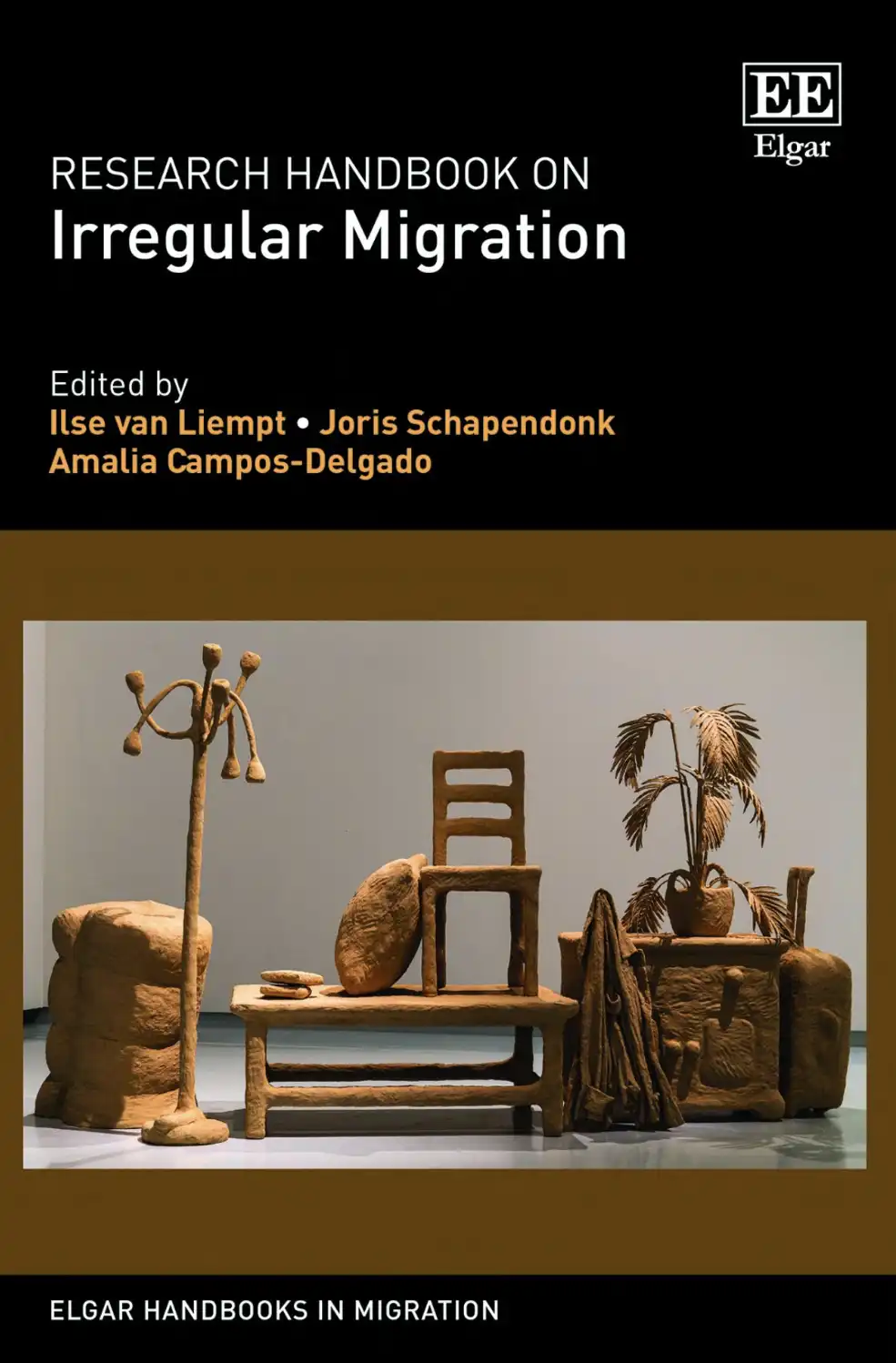PUBLICATIONS
Research Handbook on Irregular Migration
Liempt, I. van, J. Schapendonk & A. Campos-Delgado. / March 2023
In March 2023 a research handbook on irregular migration was released with Edward Elgar edited by Ilse van Liempt, Joris Schapendonk and Amalia Campos-Delgado. The book contains of 30 chapters and puts the lives and voices of irregular migrants and ethics at the center. Moving away from state categorizations on irregular migration, the handbook critically examines processes and dynamics that generate and reproduce irregularity, and discusses who may count as an irregular migrant. Chapters investigate the many different pathways into irregularity, demonstrating the benefits of understanding dynamics behind irregular migration over statistics and showing how in today’s world access to safe and legal migration is highly political.
The book is divided in three parts: approaches and perspectives on irregular migration, aspirations and facilitation of irregular migration and everyday life and (im)mobility. The book provides an expert review of geographical and historical paths into irregular migration. Amade M’charek’s chapter for example draws readers away from Europe’s borders into other material geographies, onto beaches of a Tunisian fisher town, showing how the ‘northern gaze’ overlooks alternative historical reasons and routes of migration. Marlou Schrover in her chapter argues that attention to gender is important in holding potential to eschew binaries and to understand constructions that produce and are produced by labeling something or someone irregular. Alison Mountz’ afterword in which she reflects on how coloniality and racism fuels persistent framings of irregular migration is spot on, and her questions around what researchers do with the knowledge they carry, and what is ethical here, is important food for thought.
The artwork that appears on the cover is entitled Almost There. It is made by the Dutch-Afghan artist Narges Mohammadi. The title of this art work reflects a condition many people in irregular situations are confronted with. It relates to the shifting temporalities of irregularity and the feeling that one has to go through one more hurdle, one more hardship, one more place, one more border or one more bureaucratic procedure, in order to finally arrive somewhere. Various chapters in the book refer to the complexity of time, what it means to be profoundly stuck at sea and in camps or to inhabit precarious temporalities. However, the position of some of the materials in this artwork (the jacket and the suitcase) means that this installation breathes a kind of readiness for movement. One is actually unsure whether it represents a process of emplacement (installing the furniture and plant) or displacement (preparing for a rapid departure). The book argues that it is exactly this confusion that is productive in critically thinking about irregularity, borders and migration and moving beyond existing categories.
Furthermore, in conversations with Narges, she highlighted the qualities of loam that relate to the essence of her work. Loam is a heavy, robust and voluminous material, and it can be found in many places in the world. The roughness of loam relates in her view to the roughness of migration regimes producing migrant hardships. These hardships should not be viewed as individual experiences but rather as a global condition. Yet, as Narges also explained, when treated in different ways, loam can be gentle, detailed and very delicate. Above all, loam cannot stand water. We see this later characteristic as a sign of hope. However robust realities and regimes appear to be, there are forces that can radically change them. With I-CLAIM we also aim to contribute to change in the field of irregular migration and work.
